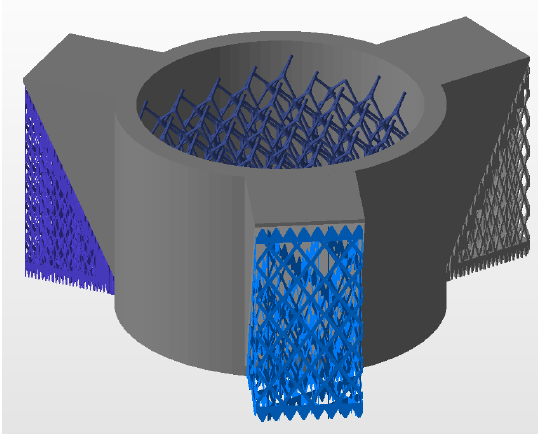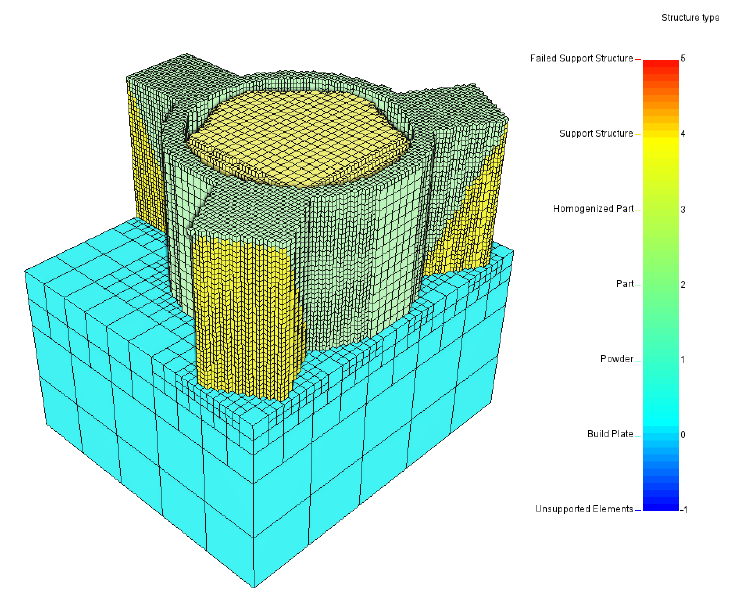Sample files for use with the examples are available from the Downloads page.
Expand the downloaded ZIP archive into a convenient directory from which to run Local Simulation inside the numbered directories.
Problem Description
For this example, you will run commands inside directory 18.
Figures 1 shows the geometry used in the present STL homogenization example. The component is a vertical cylinder with 3 spokes jutting from the sides, cut at a 45° angle. Each of the 3 spokes have support structures. The first set of supports is a solid support with a 0.100 mm wall thickness. The second support structure is a loosely meshed zero thickness STL. The third support structure is a finely meshed zero thickness STL. In the center of the cylinder a latticed structure component is also built. All 3 supports and the latticed structure will be modeled using automatic homogenization via the *STLH card. The present simulation uses Inconel 625 material properties for the build and the build plate. Support structure failure is also considered at an arbitrary support structure failure of 1800 MPa, assigned by the *UTSR card.
STLH takes any arbitrary STL file and homogenizes the part, creating volumetric representation of the part’s bounding box. To account for the differences in thermal and mechanical behavior between the shrink-wrapped volume and the original geometry, the material properties are scaled by the volume fraction. The volume fraction is simply the ratio of the original as printed volume to the homogenized volume. There are four options to assign the volume fraction:
- User specified volume fraction
- For closed, volumetric type supports and lattices, the volume of the component can be calculated directly from the STL file geometry
- Calculate the volume of the component by specifying a structure wall thickness
- Calculate the volume of the component based upon the laser beam diameter used in the source PRM file
This example uses all four options:
- Lattice – Calculate volume from STL directly.
- Solid support – User specified volume fraction, set to 0.22 by the *STLM card.
- Loose zero thickness support – Calculate volume fraction from a specified wall thickness, set to 0.22 mm.
- Fine zero thickness support – Calculate volume fraction from laser beam diameter, which is 0.15 mm for this PRM file.

Figure 1: STL homogenization example geometry
The *STLH card is used to map the volume fraction choices to the STL files. It has additional control, the alpha radius, which specifies a spherical radius, which sets the maximum hole size that will be homogenized. For instance the fine zero thickness supports have an alpha radius of 5 mm, so that if any gap exists that can fit a sphere with a 5 mm radius across it, that gap will not be filled in during meshing.
Figure 2 shows the mesh and the structure type of the part. Observe the homogenization of the lattice and support structures.

Figure 2: STL homogenized mesh with structure type